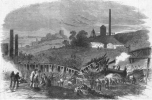BRX
Established Member
- Joined
- 20 Oct 2008
- Messages
- 3,638
The Caledonian Sleeper with 16 coaches is the longest domestic service in the UK now. Some discussion on the CS thread highlighted that few stations can actually accommodate it on one platform.
But the fact that some stations (including stations off the current regular sleeper route) can accommodate such a train must mean that in the past there were trains of similar length or longer.
Was it at one time much more common to have trains that long, and did we in the past operate even longer ones?
But the fact that some stations (including stations off the current regular sleeper route) can accommodate such a train must mean that in the past there were trains of similar length or longer.
Was it at one time much more common to have trains that long, and did we in the past operate even longer ones?

